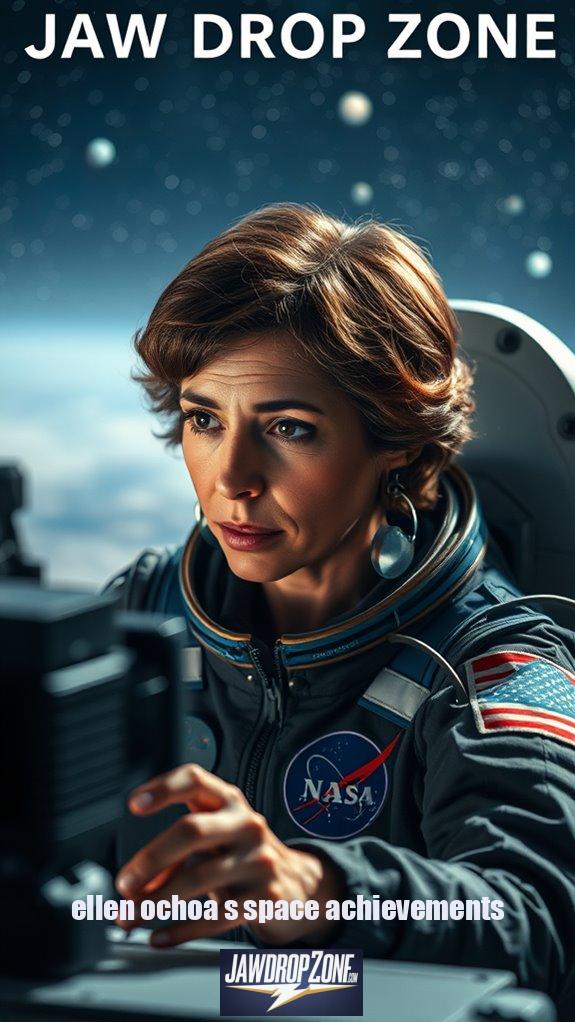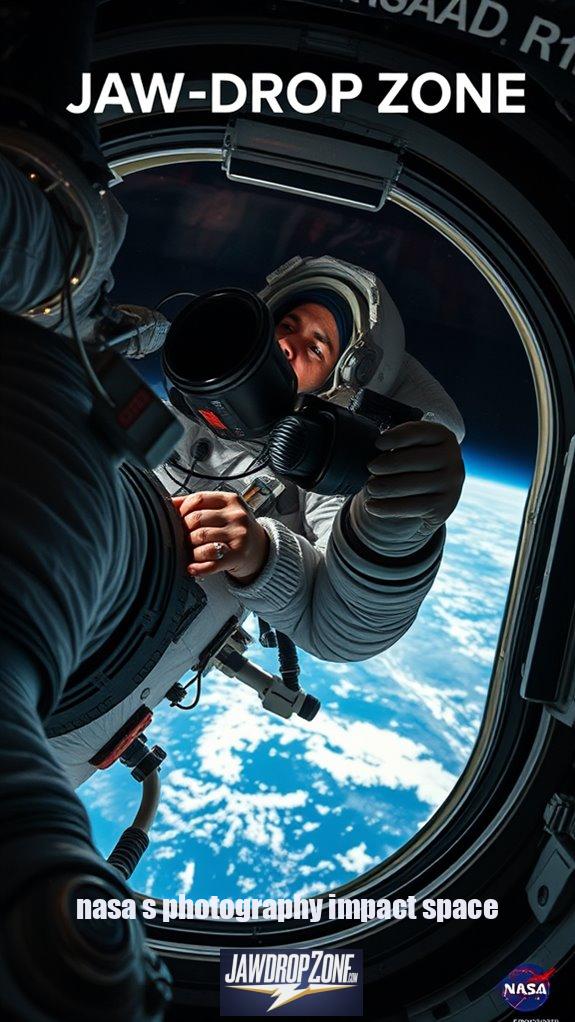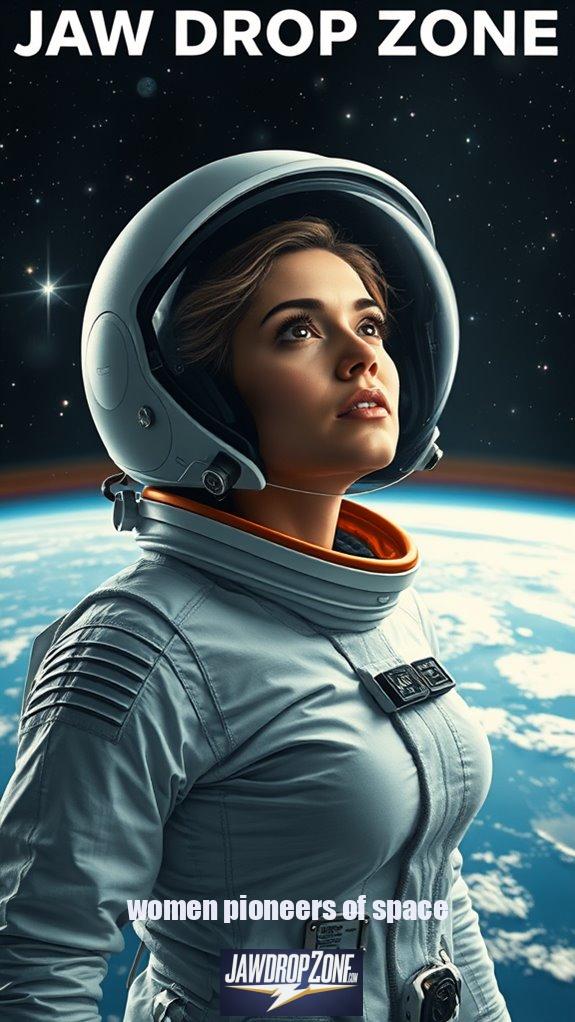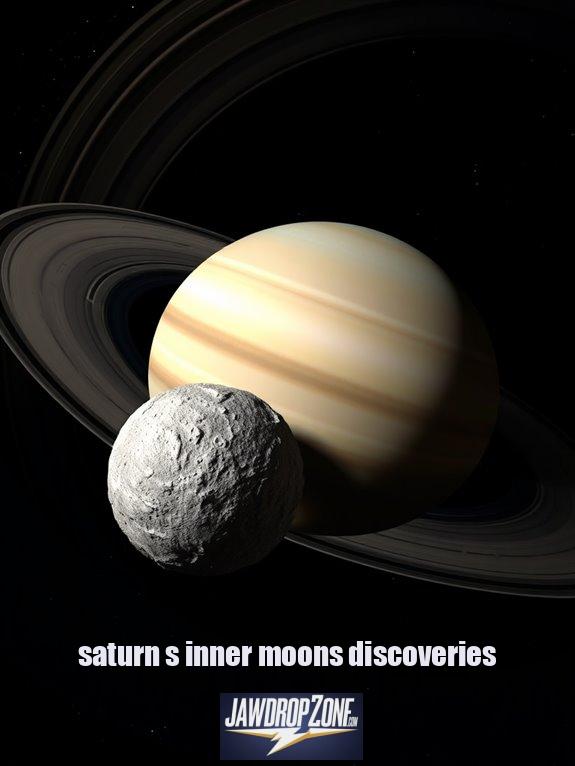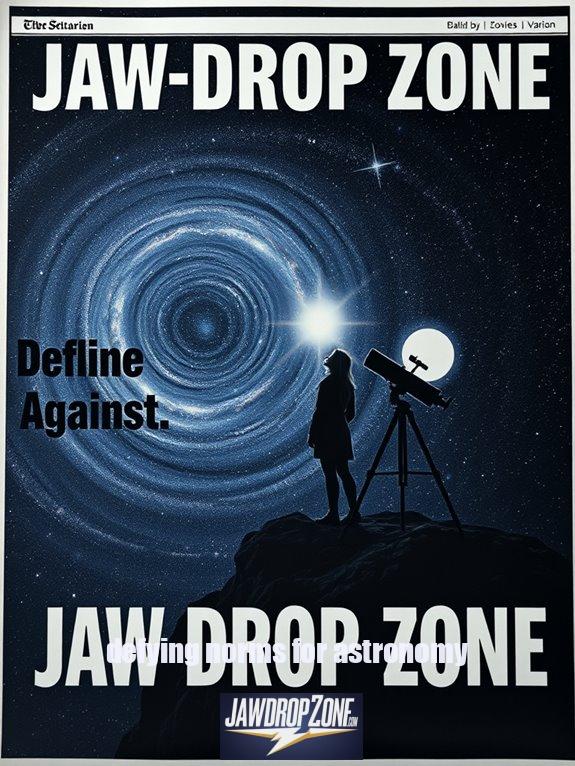Did you know Ellen Ochoa, the first Hispanic woman in space, completed four missions, spending over 40 days orbiting Earth? During her groundbreaking STS-56 mission, she researched solar effects on our atmosphere. Talk about aiming high! Ochoa didn't just fly – she played a crucial role in deploying satellites for climate studies, paving the way for future advancements. Her achievements spark curiosity and inspire a new generation of explorers. Curious about how she changed the game? Let's keep going!
Quick Takeaways
- Ellen Ochoa became the first Hispanic woman in space during the STS-56 mission in April 1993, breaking significant barriers in aerospace.
- Over her career, Ochoa completed four space missions, spending more than 40 days in orbit and conducting vital atmospheric research.
- As the director of NASA's Johnson Space Center, she became the first Hispanic and second woman to hold this prestigious leadership role.
- Ochoa is a strong advocate for STEM education, promoting diversity and accessibility in aerospace for underrepresented groups.
- Her legacy continues to inspire future scientists and engineers, demonstrating that space exploration is achievable for everyone, regardless of background.
Ellen Ochoa: A Trailblazer in Space Exploration

When you think of trailblazers in space, does a Hispanic woman come to mind? If not, allow me to introduce you to Ellen Ochoa, the first Hispanic woman to soar into the final frontier aboard the STS-56 mission in April 1993. Now that's a record that deserves a standing ovation!
Picture this: Ochoa spent over 40 days orbiting Earth during her four missions, and she didn't just sit back with a space latte—she conducted groundbreaking research on how the Sun impacts our atmosphere. Yeah, she analyzed the way our fiery ball of gas interacts with the planet like it's a complex friendship!
You may think space missions are all about the rockets and astronauts, but think bigger. Ochoa was instrumental in deploying satellites that study atmospheric phenomena. The SPARTAN and CRISTA-SPAS satellites? That's her doing, tackling climate studies like a pro while constantly contributing to the assembly of the International Space Station.
And let's not forget the historical STS-96 mission—the first time we docked with the ISS! That's not just impressive; it's downright game-changing! She also played a key role in releasing and retrieving the SPARTAN satellite during STS-56.
What's even more mind-blowing is her academic superhero status. She earned a doctorate in Electrical Engineering, boasts patents that would make any inventor proud, and led a research team at NASA's Ames Research Center. Talk about a multitasker!
After an illustrious space career, Ellen became the director of NASA's Johnson Space Center—the first Hispanic and second woman to do so. Can you believe that? Leading one of the most important space organizations in the world!
And it doesn't stop there. She's an advocate for STEM education and diversity in the field, making waves that reach far beyond space. With every accolade she gets—like the Presidential Medal of Freedom and induction into the Astronaut Hall of Fame—she shows that anyone can leave an indelible mark on this universe.
Her legacy is a reminder that space isn't just for the chosen few; it's for all of us. Isn't that inspiring?
Vision Technology for Space Exploration

Visualize this: you're in the vastness of space, light-years away from home, and suddenly you realize how much you rely on technology to navigate the cosmos.
From AI analyzing data to enhance image clarity, every piece of tech plays a vital role. Ever thought about how drones identify asteroids?
Or how rovers autonomously map terrains? These advancements not only keep spacecraft safe but also guarantee we're on top of our game during missions. Remarkably, Ellen Ochoa's contributions to optical data processing have paved the way for future advancements in space exploration.
You might be wondering why I created Jaw Drop Zone—it's simple! I want everyone to comprehend these mind-blowing tech wonders, making space exploration accessible and exciting for all.
References
- https://www.britannica.com/biography/Ellen-Ochoa
- https://www.nasa.gov/people/ellen-ochoa/
- https://ohmyfacts.com/celebrities/10-facts-on-ellen-ochoas-achievements/
- https://kids.britannica.com/students/article/Ellen-Ochoa/601172
- https://lemelson.mit.edu/resources/ellen-ochoa
- https://devisionx.com/how-ai-computer-vision-reimagines-space-exploration/
- https://www.visionlearning.com/en/library/Process-of-Science/49/Ellen-Ochoa/201/reading
- https://www.aiacceleratorinstitute.com/4-uses-of-computer-vision-in-space-exploration/
- https://theophthalmologist.com/subspecialties/advancing-vision-with-technologies-for-spaceflight
